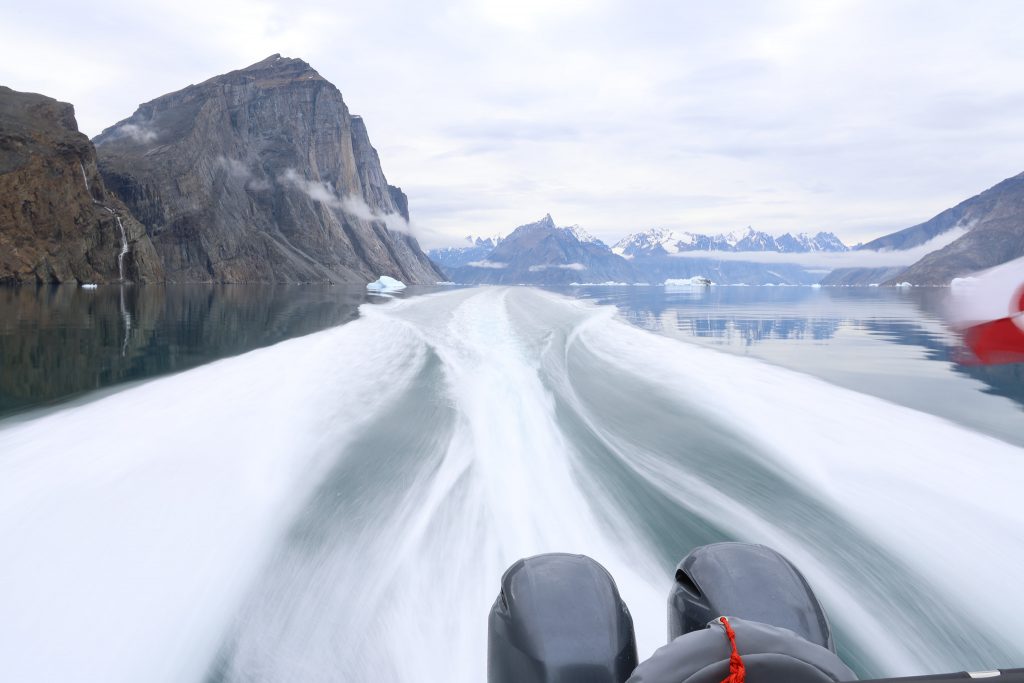

This is a dispatch from Constantino Panagopulos, a science writer at the Jackson School of Geosciences, who is documenting the TERMINUS mission to explore Greenland glaciers from underwater. The mission is led by Professor Ginny Catania and collaborators. Learn more about it here.
Our transit from Uummannaq in Western Greenland to the RV Celtic Explorer was spectacular.
The boat’s cabin had space for five: Paaluk the skipper; Jackson School of Geosciences researchers Benjamin Keisling, a glaciologist at the University of Texas Institute for Geophysics, and Mikayla Pascual, graduate student; Bridget Ovall, an oceanographer with Rutgers University; and me, a science writer for the Jackson School here to document the expedition.
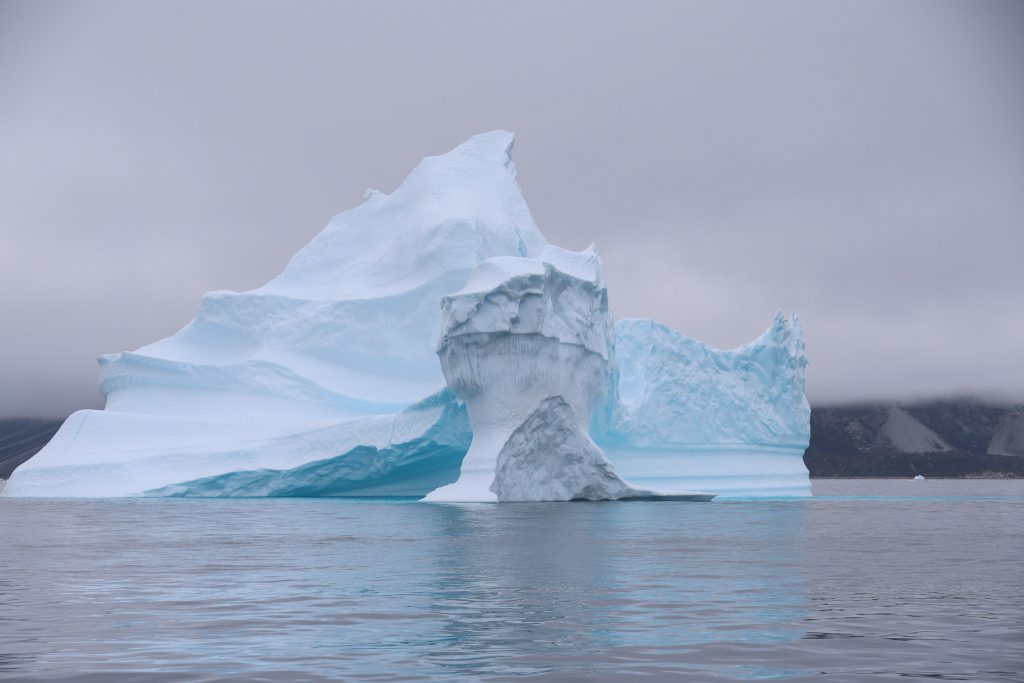
Crossing Uummannaq Bay we passed icebergs of every size. Some towered over us like shining cathedrals. Others were grey and dirty, as if they’d been rolled in mud. Bridget explained these were chunks broken off from the edges of the glacier, which become encrusted with grit and rock as the ice flows downhill to the sea. The encrusted ice is like sandpaper to the bedrock and allows the glacier to carve deep channels in the land.
The product of this abrasive motion is what’s brought the scientists here: sediments that could be the key to better understanding Greenland’s erratic ice sheet and future sea level rise.
It’s into one of these deeply eroded channels that our boat now turns. We follow the steep fjord to a vast ice wall that marks the edge of the glacier. Nearby, and dwarfed by icebergs the size of city blocks, is our final destination, the RV Celtic Explorer.
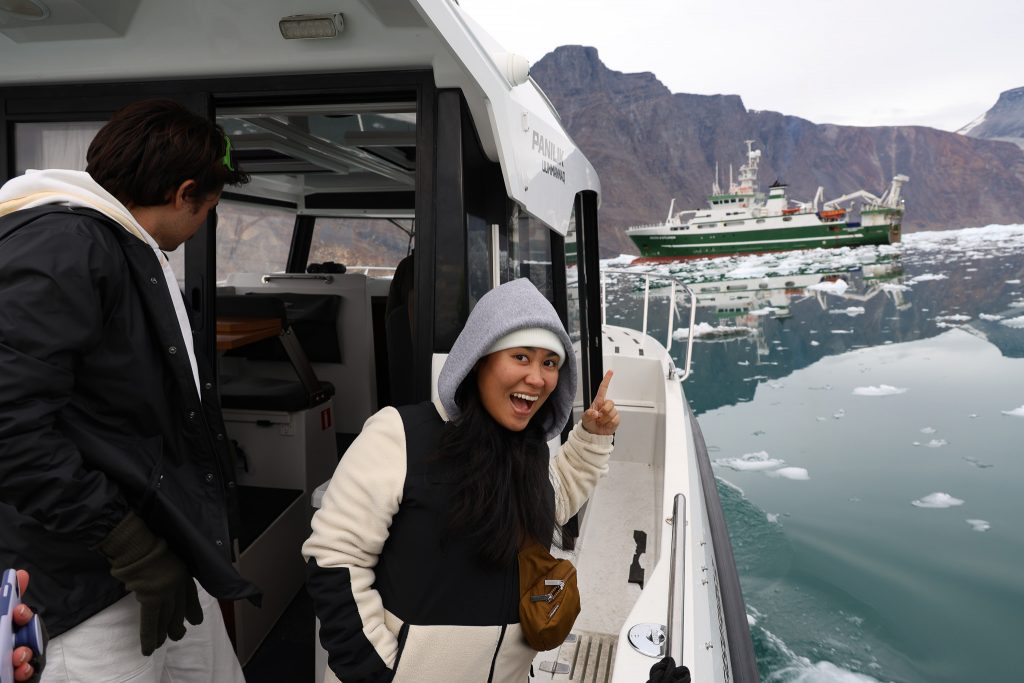
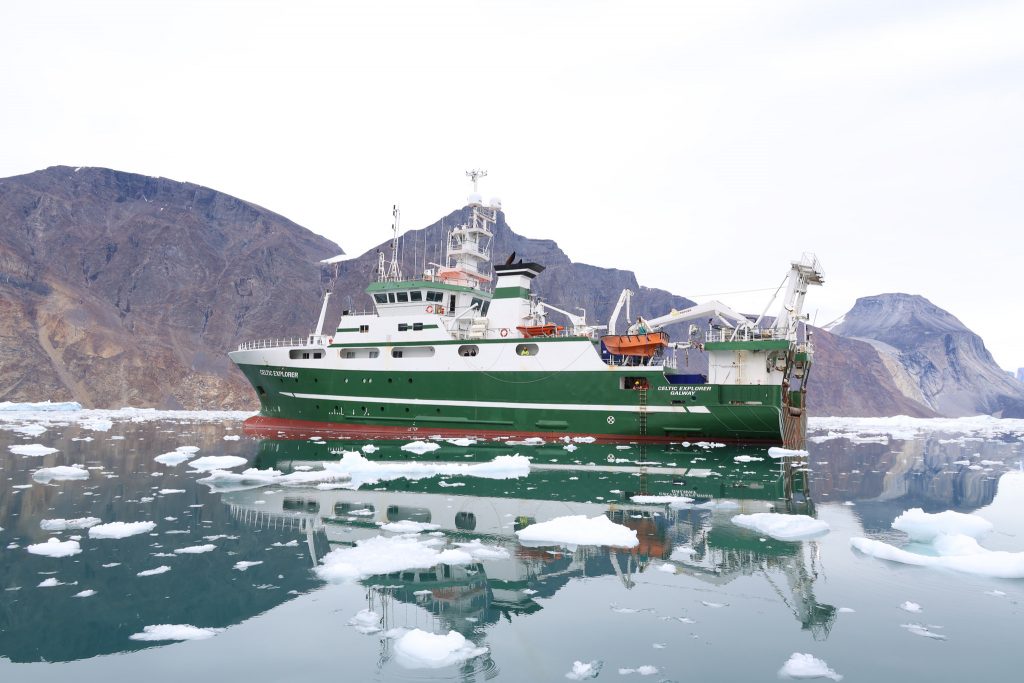
The Celtic Explorer is a research vessel run by Ireland’s Marine Institute. It’s green hull is about 215 feet from bow to stern and it accommodates 15 crew and 20 scientists. Personnel work 12-hour shifts meaning that operations continue day and night — although there’s no real night this far north. Sleeping quarters have two bunks and a bathroom, and the kitchen turns out three satisfying meals a day. There’s even a small gym, a sauna, and recreation rooms on board, but in between shifts most scientists and crew spend their time entranced by the natural beauty around them.
Currently, the Celtic Explorer is kitted out with an array of geophysical sensors and probes designed to measure ocean conditions, peer beneath the sea floor and gather samples both from the seafloor and the sediments pouring out in plumes from under the glacier.
It’s also carrying Nereid Under Ice (NUI), a car-sized robot submersible that for the past two weeks has been undertaking missions to the glacier’s underwater face.
At the head of the operation is Ginny Catania, a professor at the University of Texas Institute for Geophysics and UT Jackson School of Geosciences. We’ve arrived midway through the expedition, which until recently had been going incredibly well.
Catania is first to greet her newly arrived colleagues and the scientists’ reunion is emotional. But they’re soon at work. Our late arrival had left the team stretched thin for days. To add further complication, the fjord had filled with ice and forced the vessel to retreat out of NUI’s diving range.
With the Celtic Explorer on a hard deadline to start its next job, there’s no option to pause operations: each hour spent doing nothing is an hour of wasted science.
High on the scientists’ agenda is what to do next. In a familiar repeat of the improvised team briefings, I witnessed on my journey here, the team brainstormed their options and set a plan in motion.
With winds forecast to pick up overnight, the expedition would wait until the morning and see if the ice cleared. If it didn’t, we’d weigh anchor and head for another nearby glacier, entirely different from this one but equally interesting.
Meanwhile, the science would go on. As the midnight sun dipped below the fjord walls, the ship backed away from the glacier and positioned itself over an underwater ridge.
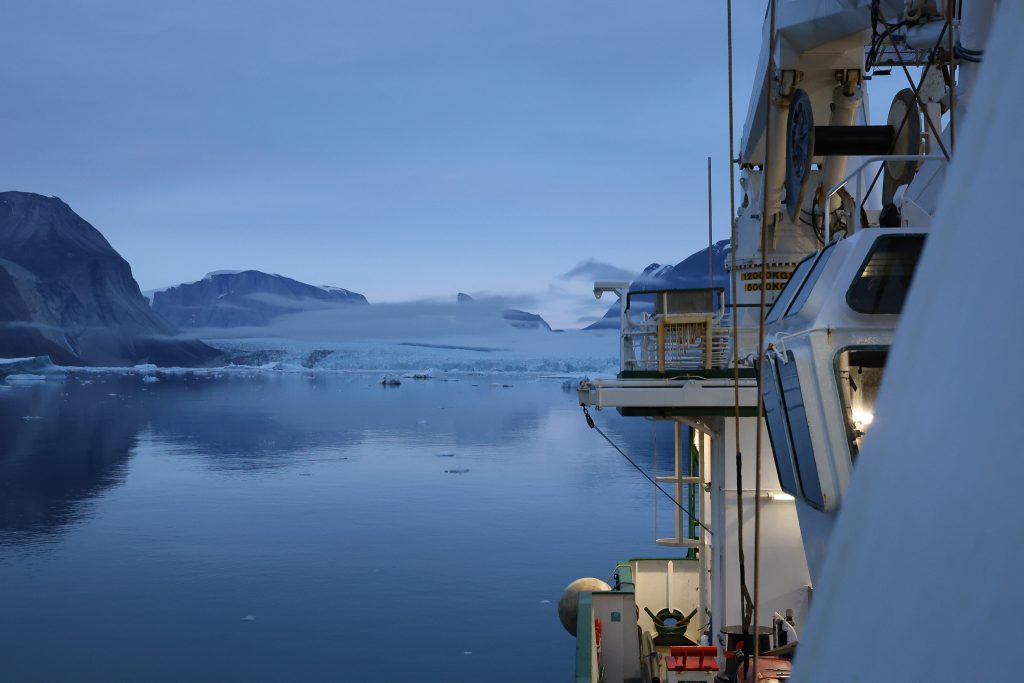
Known as a moraine, the scientists think this wall of sediments marks the extent of the glacier’s advance during a period of global cooling 500 years ago called the Little Ice Age. The night shift would take sediment cores and seismic surveys, both from the moraine itself and where they think sediments spilled over as the ancient glacier melted.
For the day shift, it’s time for rest, an opportunity to catch up and reflect on the successes to date. We go to bed hopeful. If the ice clears, the NUI team will prep for another dive. If not, the ship will head back up the fjord and on to the next glacier.
This is the second dispatch on the mission. To see the rest, check out the TERMINUS mission blog.
